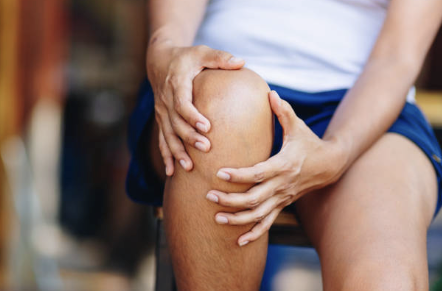What is an MCL injury?
The medial collateral ligament (MCL) is one of the ligaments that connects the thigh bone (femur) to the shin bone (tibia). It is located at the inner portion of the knee. This ligament functions to stabilize the knee. It acts to prevent excessive rotational and valgus forces onto the knee. The most common way the MCL is injured is when there is a blow that pushes the knee inwards hence stretching the MCL structure. A MCL injury can also occur in sports that require a lot of pivot movements e.g. basketball, skiing and soccer. The act of shifting body weight from one direction to another can add excessive force to the MCL. A MCL injury can be diagnosed using both clinical assessment from a health professional and medical imaging. The severity of an MCL injury can be classified using 3 grades:
Grade 1: minimal joint laxity and ligament is intact on imaging results.
Grade 2: mild to moderate joint laxity and partial ligament tear on imaging results
Grade 3: severe joint laxity and complete rupture of the ligament. Most grade 3 injury have concomitant ligament injuries.
How long does it take to heal?
There are many factors that can affect the prognosis of an MCL injury. These include age, sport requirements, work environment, concomitant injuries and severity of the injury. The MCL has good blood supply hence healing rates are quicker compared to other ligaments. The recovery time for a mild grade MCL sprain is about 4-6 weeks of physiotherapy. Moderate grade 2 MCL injury will require 6-8 weeks of physiotherapy. Severe grade 3 MCL injury will require 8-12 weeks of physiotherapy.
Rehab process for MCL injury
A MCL injury may require a hinge brace to help prevent against environmental factors that might irritate the ligament. This will allow for a better healing environment for the MCL. In most cases, MCL injuries can be treated conservatively due to its high intrinsic healing ability. The early stage rehab process usually involves manual therapy to help with pain management and to facilitate an optimal environment for healing the injured ligament. Rehabilitation exercises will focus on quadriceps, hamstring and glutes strength exercises. Strong lower limb muscles will help support the knee and the MCL structure. The late stage rehab process will involve more dynamic exercises. For athletes, these exercises will be based on the movement required for their sport. Our physiotherapists are experts at treating knee injuries, we will be able to provide you with an individualised rehabilitation program. Contact us today to book an appointment with one of our friendly physiotherapists. You can also follow us on Facebook and Instagram to stay updated on physiotherapy tips.
This information is for educational purposes only and is not intended to replace the advice of your doctor or health care professional. We encourage you to discuss any questions or concerns you may have with your health care provider.

